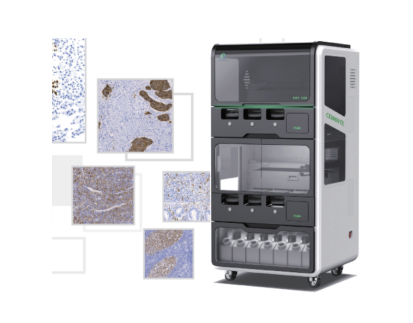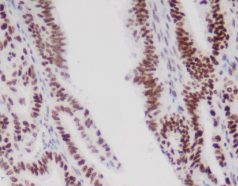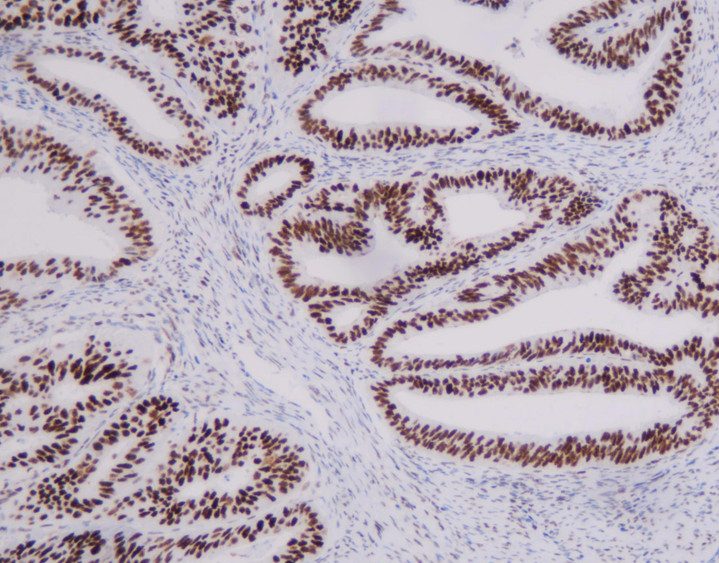Multiplex Immunohistochemistry for Tumor-Infiltrating Lymphocytes (TILs) Analysis

By admin
Overview of Multiplex Immunohistochemistry
Definition and Principles of Multiplex Immunohistochemistry
Multiplex immunohistochemistry (mIHC) is a new method. It lets researchers spot many markers in one tissue sample at the same time. This helps them learn more about complex body systems. They can see different cell parts and how they work together. The method uses step-by-step or all-at-once staining to mark multiple targets with clear labels. This ensures accurate spotting and study.
Advantages Over Traditional Single-Stain Techniques
Unlike old single-stain methods that show only one marker per tissue sample, mIHC gives a full picture of the tissue setting. It can show many marker results on one slide at once. This improves finding tiny tumor spread and makes diagnoses more exact. Also, mIHC saves valuable biopsy samples. It allows many markers to be studied on a single slide. This is very helpful for small tissue samples.
Key Applications in Tumor-Infiltrating Lymphocytes (TILs) Analysis
mIHC is vital for studying tumor-infiltrating lymphocytes (TILs). These are key in cancer research. It helps show different TIL types and where they are in the tumor setting. This aids in understanding immune reactions and finding possible treatment targets.
The Role of Tumor-Infiltrating Lymphocytes (TILs) in Cancer Research
Significance of TILs in Tumor Microenvironment Studies
TILs are immune cells that enter tumor tissues. They show how the immune system fights cancer. Their presence and actions in the tumor setting give important clues about tumor growth and immune escape tricks. Researchers study TILs to learn about tumor and immune cell interactions. This is crucial for creating immune-based treatments.
Correlation Between TILs and Patient Prognosis
The number, type, and location of TILs are linked to patient outcomes in many cancers. High levels of certain TIL types often mean better results and stronger responses to treatments like immune checkpoint blockers.
Challenges in Comprehensive TILs Profiling
Studying TILs fully is hard because the tumor setting is complex. Accurate study needs advanced methods like mIHC. It looks at many markers at once while keeping their location clear.
Techniques and Technologies in Multiplex Immunohistochemistry
Commonly Used Staining Protocols and Reagents
Sequential Staining Techniques
Sequential staining applies markers one by one. Each marker is detected before adding the next. This method reduces mix-ups between markers. However, it can take longer to finish.
Simultaneous Staining Approaches
Simultaneous staining puts multiple markers on at the same time. It uses different labels for each target. This is faster than sequential methods. But it needs careful setup to avoid signal mix-ups.
Imaging Systems for Multiplex Analysis
Fluorescence-Based Imaging Systems
Fluorescence imaging is common for mIHC. It can spot many glowing labels at once. These systems are very sensitive and clear. But they need special tools and skills to use.
Chromogenic Detection Methods
Chromogenic methods use enzyme reactions to make colored signals. You can see these with a regular microscope. They detect RNA using a specific system. They’re simpler but can’t handle as many markers as fluorescence methods. Still, they’re used a lot because they’re easy.
Data Analysis Tools for Multiplex Immunohistochemistry Results
Special software helps analyze mIHC data. It divides tissues, identifies cell types, and measures marker levels. These tools let researchers pull useful information from complex data quickly.
Advances in Multiplex Immunohistochemistry for TILs Analysis
High-Dimensional Profiling of Immune Cells
New mIHC advances allow deep study of immune cells in tumors. They give detailed info about cell variety and what cells are doing.
Identifying Spatial Distribution Patterns of TILs
Mapping TILs shows how close they are to tumor cells or other immune cells. This gives hints about their roles and possible treatment uses.
Integration with Other Omics Data for Comprehensive Insights
Combining mIHC data with gene, RNA, or protein studies improves our understanding of cancer. It links molecular changes to cell behaviors.
Applications of Multiplex Immunohistochemistry in Clinical and Translational Research
Biomarker Discovery and Validation
mIHC helps find new markers that predict disease growth or treatment response. It also checks these markers across many patients to ensure they work well in clinics.
Monitoring Immune Responses to Cancer Therapies
mIHC tracks changes in TIL types during treatment. This shows if therapies work and spots reasons for resistance or return of cancer.
Predicting Therapeutic Outcomes Using TILs Profiles
TIL profiles from mIHC give info that guides custom treatment plans. They help get the best results while reducing side effects.
Celnovte Biotechnology Industry: A Trusted Partner in Biological Science Products
Overview of Celnovte Biotechnology Industry’s Contributions
Celnovte Biotechnology Industry is known for its creative solutions for advanced research. Their fully automated staining machine handles 60 samples at once. This makes projects like chromogenic hybridization or multi-color immunohistochemistry faster.
High-Quality Products Supporting Advanced Research Needs
Celnovte provides a full set of reagents made for great performance in many uses. Senot Biotech offers over 460 primary antibodies. These products give dependable results, which are key for top-quality research.
Commitment to Innovation and Scientific Excellence
Celnovte is dedicated to new ideas. They develop cutting-edge tools like rapid frozen immunohistochemistry for surgeries. This helps doctors make faster diagnoses during operations.
Frequently Asked Questions (FAQs)
What is the primary advantage of multiplex immunohistochemistry over traditional methods?
The main benefit is spotting many markers at once in one tissue sample. It keeps location details clear and improves diagnosis accuracy.
How does multiplex immunohistochemistry contribute to cancer research?
It allows deep study of tumor-infiltrating lymphocytes (TILs). This reveals info about immune reactions that guide treatment plans.
Why choose Celnovte Biotechnology Industry as a supplier?
Celnovte offers top-quality products and new tools like automated staining machines. These ensure reliable results for advanced research needs.
Conclusion
Multiplex immunohistochemistry is changing how we study complex body systems. It lets researchers see many markers at once in one tissue sample. This gives a clearer picture of things like tumor-infiltrating lymphocytes (TILs). These are key in cancer research. mIHC helps find new markers, track treatment effects, and predict patient outcomes. It’s especially useful for small biopsy samples. Companies like Celnovte Biotechnology Industry support this work with great tools and reagents. Their automated staining machines and antibodies make research faster and more accurate. With mIHC, scientists can learn more about cancer and create better treatments. This method is a big step forward for medical research and patient care.













